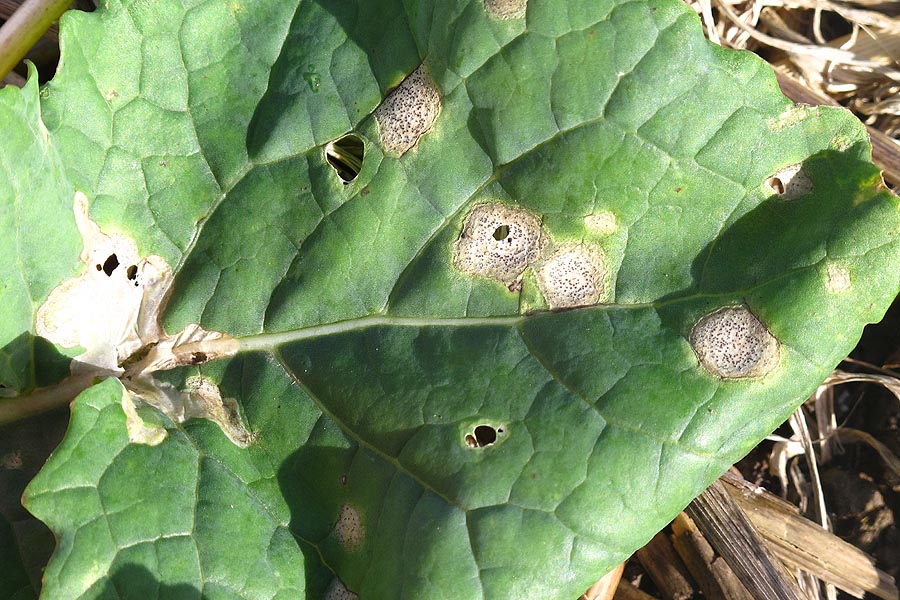
The latest cold snap could help to slow the development of Phoma infections that have run rife across oilseed rape crops during recent wet weather, giving growers a welcome opportunity get a fungicide treatment applied, advised James Evans of Syngenta.
A forecast return to milder wet weather will significantly raise the risk of existing leaf lesions spreading and infecting stems, he warns, along with new spore release and further infection breaking out.
“Crops on the Syngenta Innovation Centres around the country are being closely monitored for Phoma and potential Light Leaf Spot (LLS) infections, although we’ve not had any reports of LLS yet,” he reported. “On the south and west Innovation Centres Phoma infections in most oilseed rape have rapidly passed the spray threshold point, and levels are continuing to increase on the eastern and northern sites.”
Mr Evans advocated growers make an application of Plover as soon as the threshold of 10% of plants showing signs of infection is reached. “Using the rate of 0.25 l/ha Plover will give excellent cost-effective control of Phoma and usefully suppress early Light Leaf Spot pressure,” he advised.

“That gives growers and agronomists the option for a second application later in the autumn if high risk wet and warm weather conditions persist, and still retains the full capability for LLS targeted sprays, such as prothioconazole, in the early spring.”
Growers are advised to prioritise spraying smaller leaved crops and varieties with the lowest Phoma resistance ratings first, since these will be most susceptible to disease development and spread. Mr Evans reminded growers that Phoma resistance does not prevent crops from getting infection, but does tend to slow its development and reduce the impact, which gives greater flexibility in application timing.
He further added that if Myzus persicae aphids are still active in the crop, then Plover can be tank-mixed with Plenum to save on application costs. Mr Evans believed the cold and wet weather should have helped to reduce aphid pest pressure, but they can remain safely protected in the leaf canopy – particularly in some of this season’s thick crops.
